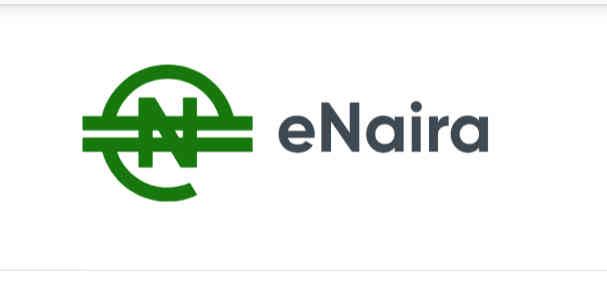The eNaira Revival and the FinTech Question: Collaboration or Competition?, by Shuaib S. Agaka
The Central Bank of Nigeria’s renewed push to revive the eNaira comes at a time when the country’s digital payments ecosystem is already vibrant, competitive, and largely driven by private innovation. From Paga to Flutterwave, Paystack to Opay, Nigerian FinTechs have built intuitive, reliable, and widely adopted platforms that meet consumer needs with speed and flexibility. Yet, the eNaira, launched as Africa’s first central bank digital currency, has struggled to find relevance outside the headlines of its debut. As the CBN prepares its second big push, one question looms large: should the eNaira be seen as a competitor in the payments market, or should it become a collaborative tool that leverages the existing FinTech infrastructure to succeed?
The problem with the eNaira’s first iteration was never purely technological. Nigeria already has high mobile penetration, expanding internet access, and a population that has demonstrated openness to cashless transactions. What it lacked was a clear value proposition. For consumers, the eNaira did not feel meaningfully different from using a mobile banking app or a FinTech wallet, and in some cases, it offered less convenience. Transactions were not always seamless, the onboarding process was clunky, and integration with everyday payment channels was limited. Worse still, the digital currency was often misunderstood, with some perceiving it as a replacement for bank deposits or even a way for the government to monitor spending more closely. In a market where trust in financial institutions is fragile, those perceptions were enough to keep many away.
Rather than treating the eNaira as an all-in-one digital payments disruptor, the CBN could reimagine it as an underlying public infrastructure—much like the NIBSS Instant Payments system—that private innovators can build upon. FinTechs could integrate the eNaira into their platforms, offering it as a payment option alongside traditional bank transfers, card payments, and wallet transactions. This would not only boost visibility but also allow Nigerians to access the currency through familiar interfaces they already trust. Instead of expecting users to download and learn a standalone eNaira app, CBN could let them experience it inside apps they already use daily.
Collaboration could also unlock use cases that the CBN alone cannot create. FinTechs excel at tailoring products to specific consumer segments—be it small traders needing microloans, diaspora families sending remittances, or students making low-cost transfers. The eNaira could be embedded into these services, offering instant settlement, lower transaction costs, and interoperability across banks and wallets. For example, a merchant using a POS device powered by a private payments company could accept eNaira just as easily as cash or card, without having to change their existing setup. This integration would make the eNaira less of a theoretical financial tool and more of a functional part of daily commerce.
On the other hand, if the CBN insists on positioning the eNaira as a competitor to FinTech products, it risks alienating the very innovators who have driven Nigeria’s cashless economy forward. FinTechs have invested years of work into customer acquisition, trust-building, and infrastructure deployment. A central bank-backed product with the implicit authority of the state could disrupt that ecosystem, creating friction rather than synergy. In a worst-case scenario, the government might try to nudge users toward the eNaira by imposing restrictive policies on private operators, which would likely provoke backlash and damage public trust in the currency’s voluntary appeal.
The reality is that Nigeria’s payments space does not need another isolated platform—it needs stronger interoperability. Users should be able to move money instantly and cheaply across banks, wallets, and digital currencies without worrying about which platform the recipient uses. If the eNaira is to survive in this environment, it must play nicely with others, not insist on being the centerpiece. This is where strategic partnerships with FinTechs become more than just desirable—they become essential.
Security and regulation are also critical factors in the collaboration equation. The CBN holds regulatory authority and the ability to enforce strong security standards, while FinTechs are nimble and can roll out user-friendly solutions quickly. A partnership model could allow the CBN to set security benchmarks for eNaira transactions, while private players focus on building the consumer-facing interfaces. This would ensure the currency maintains high trustworthiness without sacrificing usability.
There is also a geopolitical dimension. Other African nations are observing Nigeria’s eNaira experiment as they consider their own digital currencies. A successful model of public-private cooperation could set a precedent for how central banks and FinTechs across the continent work together. Failure, on the other hand, would serve as a cautionary tale that state-backed digital currencies risk irrelevance without grassroots adoption strategies.
Ultimately, the eNaira’s revival hinges on whether it can transcend its initial identity as a top-down policy initiative and become an embedded part of Nigeria’s everyday payment fabric. That cannot be achieved by central bank promotion alone. It requires a willingness to share control, to trust private innovation, and to see value in co-creation rather than competition. The eNaira does not need to be the only player on the field to succeed; it just needs to be a player that others want on their team. In a country where technology adoption is driven less by formal mandates and more by convenience, incentives, and trust, collaboration is not just the smart path forward—it may be the only one that works.
Shuaib S. Agaka
















